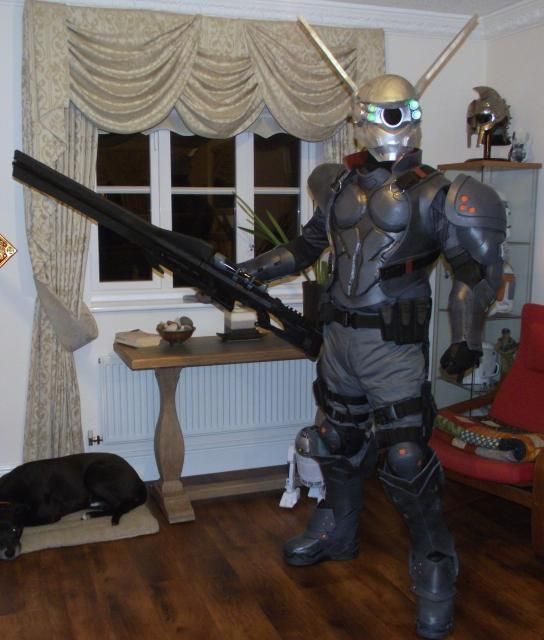You are using an out of date browser. It may not display this or other websites correctly.
You should upgrade or use an alternative browser.
You should upgrade or use an alternative browser.
Make foam armor smooth
- Thread starter Broxingar
- Start date
Ikras
Active Member
This is something I've been looking into as well. From what I've seen plastidip is a popular choice and I think that people tend to heat seal then a few coats of PVA/wood glue (possibly watered down a bit). I'm not sure about any steps after the plastidip
Another option from what I've seen is looking at a resin coating. I've been looking into this myself due to the price/availability of plastidip in the UK. The main thing I've found was through the XRobots plastic coating tutorial (http://www.therpf.com/f24/how-plastic-coat-foam-costume-pieces-146539/). Again the exact materials I'm not as sure as for price/sourcing and I'm looking into other options on that just now.
I'd be interested to know if anyone has tried the XRobots method but using polytek easyflo 120 which I've seen mentioned in some threads but not with too much detail.
Hopefully some other people can chip in on this as well who maybe have some experience with some of these methods
Another option from what I've seen is looking at a resin coating. I've been looking into this myself due to the price/availability of plastidip in the UK. The main thing I've found was through the XRobots plastic coating tutorial (http://www.therpf.com/f24/how-plastic-coat-foam-costume-pieces-146539/). Again the exact materials I'm not as sure as for price/sourcing and I'm looking into other options on that just now.
I'd be interested to know if anyone has tried the XRobots method but using polytek easyflo 120 which I've seen mentioned in some threads but not with too much detail.
Hopefully some other people can chip in on this as well who maybe have some experience with some of these methods
Last edited:
Heatshock
Sr Member
several steps
(1) with experience you learn to glue your armour pieces together better
(2) to fill holes and gaps - I used acyrlic caulk. NOT silicone. Its the stuff decorators use
foam based helmet
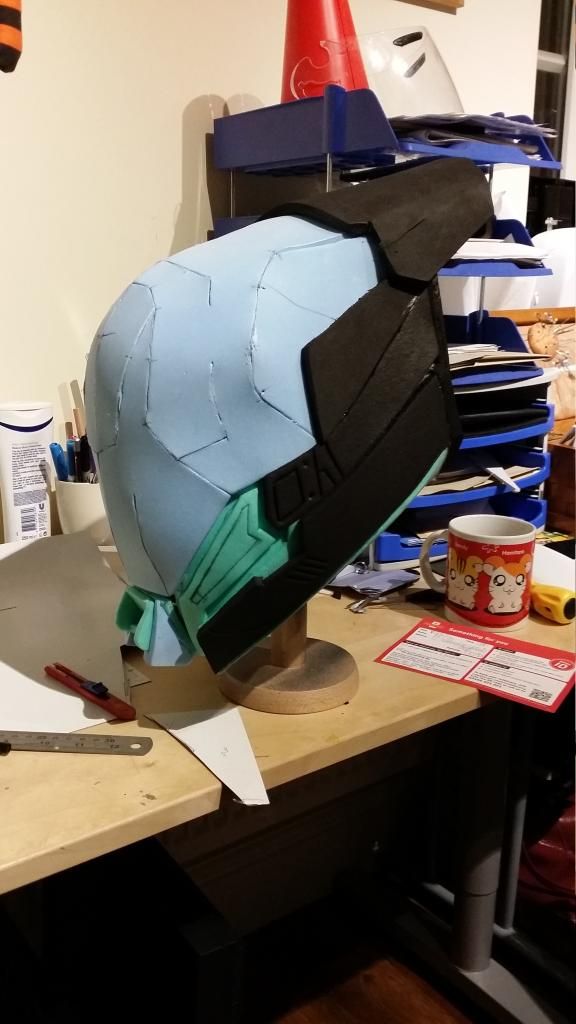
acrylic caulk applied and smoothed with fingers and a touch of water (its not an exact science)
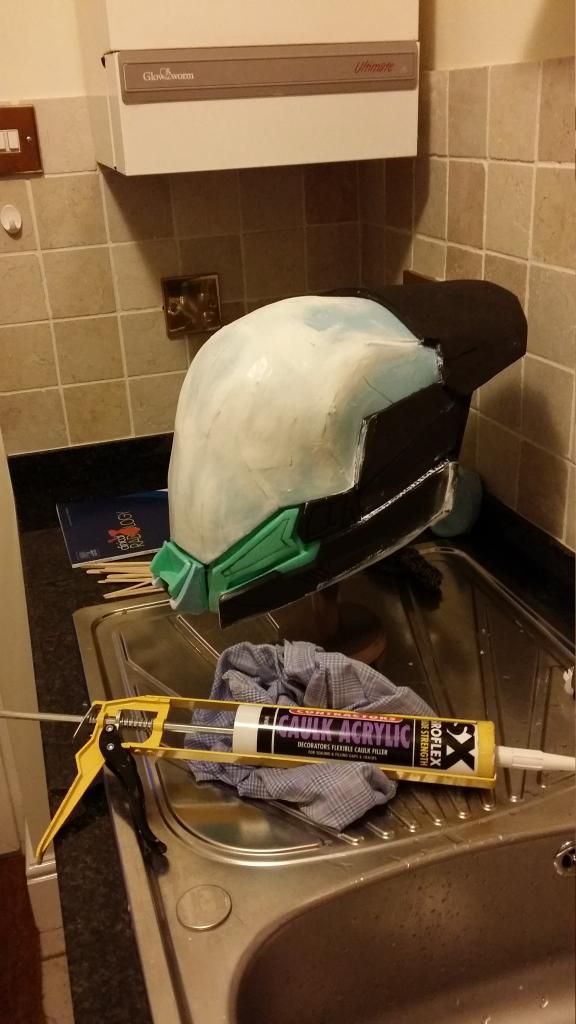
like all filling - thin layers often, rather than a big dollop of the stuff.
It will take some light sanding too
Then I prep for painting. I use simple watered down PVA glue. Slight watering down so it sticks, but primarily I think its enhances paint adhesion (although I suspect some of this is in my head). I tend to put 3-5 layers of this stuff, allowing complete drying between
added bonus is that it seals the foam as well, so it doesnt have a porous texture
primer
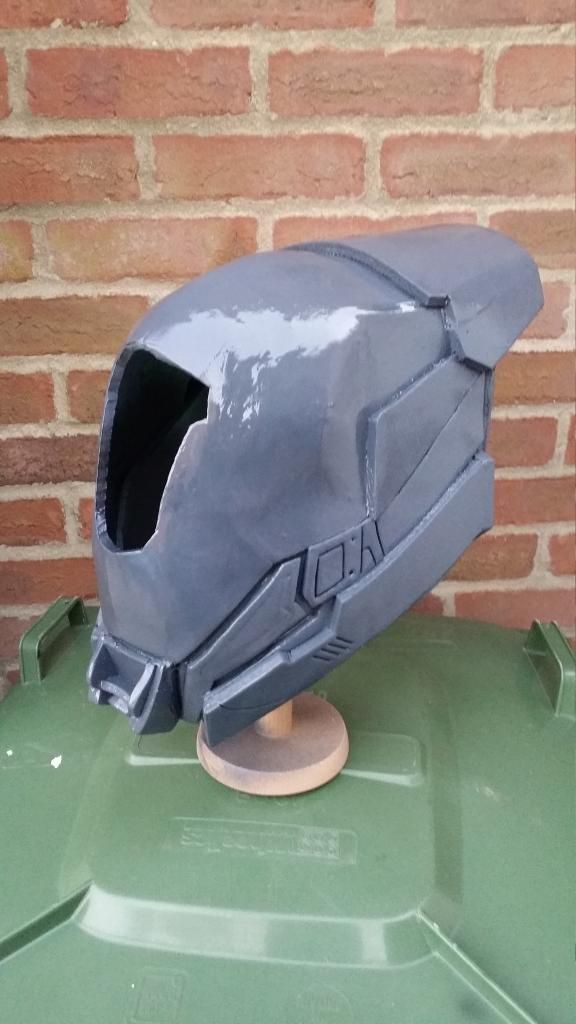
paint

paint I use with car rattle cans.
I tend coat in plastidip at the end - either gloss or smoke depending on the effect I want.
this tends to add a flexible covering over your paint reducing cracking of the paint job
same technique on the full build
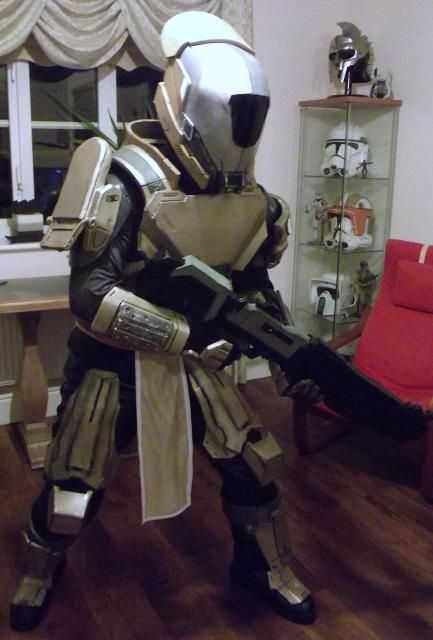
(1) with experience you learn to glue your armour pieces together better
(2) to fill holes and gaps - I used acyrlic caulk. NOT silicone. Its the stuff decorators use
foam based helmet

acrylic caulk applied and smoothed with fingers and a touch of water (its not an exact science)

like all filling - thin layers often, rather than a big dollop of the stuff.
It will take some light sanding too
Then I prep for painting. I use simple watered down PVA glue. Slight watering down so it sticks, but primarily I think its enhances paint adhesion (although I suspect some of this is in my head). I tend to put 3-5 layers of this stuff, allowing complete drying between
added bonus is that it seals the foam as well, so it doesnt have a porous texture
primer

paint

paint I use with car rattle cans.
I tend coat in plastidip at the end - either gloss or smoke depending on the effect I want.
this tends to add a flexible covering over your paint reducing cracking of the paint job
same technique on the full build

Ikras
Active Member
several steps
(1) with experience you learn to glue your armour pieces together better
(2) to fill holes and gaps - I used acyrlic caulk. NOT silicone. Its the stuff decorators use
acrylic caulk applied and smoothed with fingers and a touch of water (its not an exact science)
like all filling - thin layers often, rather than a big dollop of the stuff.
It will take some light sanding too
Interesting technique. Just trying to get my head around it just now. You just use the caulk for the gaps and tidy things up a bit then? In your example it was just on the faceplate, then the PVA went over everything and gives the whole thing more of a seal?
paint I use with car rattle cans.
I tend coat in plastidip at the end - either gloss or smoke depending on the effect I want.
this tends to add a flexible covering over your paint reducing cracking of the paint job
These are just standard car spray paints then? The kind you can pick up at hardware store etc? How many coats/cans did you require for your full suit? These coat fine over the PVA layers in your experience then? I'd been concerned that the solvent might have interacted with it somewhat and had an adverse effect.
The final plastidip coat adds a seal in effect then? Do you know if other kinds of sealants would work the same or does the plastidip version have some spray rubber included in it as well?
Heatshock
Sr Member
Correct on caulk. Only face plate needed smoothing. Watered pva is every where else.
With the pva coating i have had no problems w generic automotive paint, rustoluem, tamiya acrylic or humbrol enamels. I always use the brand specific primer to the paint.
Plastidip gloss or smoke is rubberised. I use it as a "lacquer"coat on top. I have tried standard automotive spray lacquer, but it cracks if the part requires flexibility.
U could use plastidip from the get go. It is faster. But in uk, plastidip is expensive.
Lastly. How much. Probably abt 2-3 cans of gold. 2 cans of plastidip (one gloss one smoke). smattering of other colours i had in the garage
With the pva coating i have had no problems w generic automotive paint, rustoluem, tamiya acrylic or humbrol enamels. I always use the brand specific primer to the paint.
Plastidip gloss or smoke is rubberised. I use it as a "lacquer"coat on top. I have tried standard automotive spray lacquer, but it cracks if the part requires flexibility.
U could use plastidip from the get go. It is faster. But in uk, plastidip is expensive.
Lastly. How much. Probably abt 2-3 cans of gold. 2 cans of plastidip (one gloss one smoke). smattering of other colours i had in the garage
HammyDribbler
Active Member
I have used Wood Filler, Car Filler, Spot Filler and Generic Filler and they all pretty much do the same thing. The difference is the sand-ability, the dry time and the cure thickness (how thick a coat you apply before it fails to cure correctly).
Ham.
Ham.
I have used Wood Filler, Car Filler, Spot Filler and Generic Filler and they all pretty much do the same thing. The difference is the sand-ability, the dry time and the cure thickness (how thick a coat you apply before it fails to cure correctly).
Ham.
Thanks, I'll try with the wall filler then
Similar threads
- Replies
- 2
- Views
- 680
- Replies
- 0
- Views
- 575

